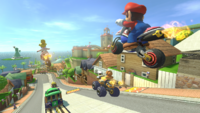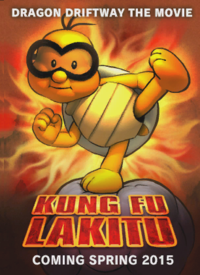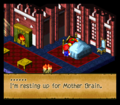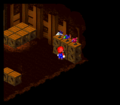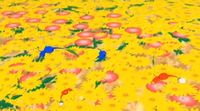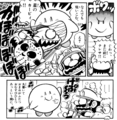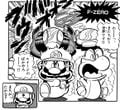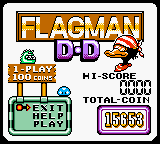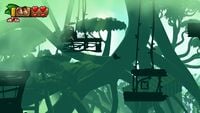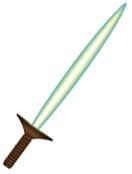List of references in the Mario franchise
It has been requested that this article be rewritten. Reason: many of these references are unsourced and seem to be based on pure speculation (tagged on May 10, 2017)
It has been requested that this article be rewritten and expanded to include more information.
The following is a list of references and parodies to works and elements of the media, other assets of popular culture, and real-life celebrities and historical persons that have appeared in the Mario franchise and its partner franchises. Note that references to other Mario video games are not included here, nor are references in crossover games referring to the original series' source material.
Arcade games
Donkey Kong
- The tune that plays when Donkey Kong is climbing to the top of the construction site is a snippet of the theme song of Dragnet.
Donkey Kong Jr.
- The jingle that plays when starting a new game in the arcade version of the game is a snippet of Toccata and Fugue by Johann Sebastian Bach.
Mario Bros.
- The music that plays when the player begins Phase 1 is the opening eighteen notes of Mozart's Eine kleine Nachtmusik.
- In the Atari commercial, the song that plays is a parody of the Car 54, Where Are You? intro.
- The Japan-only re-release of this game, Kaettekita Mario Bros., features advertisements between its levels, either for other Mario games (such as Super Mario Bros. 3) or for the re-release's sponsor, the Nagatanien food company.
Mario Undoukai
Super Mario series
Super Mario Bros.
- The Beanstalk that Mario uses to climb up to Coin Heaven is a reference to the English folktale Jack and the Beanstalk.
- Bowser's initial design was based on the ox king antagonist from Toei Animation's Journey to the West (renamed Alakazam the Great for its English release).
All Night Nippon Super Mario Bros.
An officially licensed retool of Super Mario Bros., many of the game's graphics have been altered or completely changed to feature references to All Night Nippon:
- The faces on the Goombas and the Piranha Plants are based on Sunplaza Nakano and Tamori, the show's DJ's.
- Starmen are replaced with Hiranya, a symbol popularized by the Japanese radio show Young Paradise.
- The symbol that appears on the flag raised when Mario enters the end-of-level fortress and the axe at the end of each of the castle levels is replaced with the logo for Fuji Television.
- The Mushroom Retainers saved at the end of each castle have been replaced with various Japanese celebrities. Respectively, they are: Miyuki Nakajima (World 1), Takaaki Ishibashi (World 2), Noritake Kinashi (World 3), Kyōko Koizumi (World 4), Takeshi Kitano (World 5), Daisuke Matsuno (World 6), Hideyuki Nakayama (World 7), and Goro Itoi (World A-World C)
Super Mario Bros. Special
- The item Hachisuke (a.k.a. Hu-Bee) is based on the bee from the Hudson Soft logo.
Super Mario Bros. 2
- The sound effect of Birdo spitting an egg is taken from the sound effect that plays when a magical projectile is fired by the Magical Rod item or the Wizzrobe enemy in The Legend of Zelda.
Super Mario Bros. 3
- The "Magic Whistle" item is the Recorder from The Legend of Zelda; it summons a whirlwind to warp the player character to another location and plays the same tune when used, which has become a reoccurring melody in the original series.
- The island on which the castle of Water Land is located is designed after Japan; the castle itself is also placed in the same location that Kyoto would be, the city in which Nintendo's headquarters is located.
- Super Mario Advance 4: Super Mario Bros. 3 adds to this reference by adding Sado Island.
- Excluding Larry Koopa[2], the Koopalings are named after rock-and-roll musicians or classical music composers:
- Morton Koopa Jr. is named after former country/western singer-turned talk show host Morton Downey Jr., since he "looked like a loudmouth."[2]
- Wendy O. Koopa is named after Wendy O. Williams, lead singer of American rock band The Prismatics.[2]
- Iggy Koopa is named after Iggy Pop, lead singer of American rock band The Stooges.[2]
- Roy Koopa is named after early American rock musician Roy Orbison, since they both wore glasses.[2]
- Lemmy Koopa is named after Lemmy Klimister, late lead singer of British rock band Motorhead.[2]
- Ludwig von Koopa is named after composer Ludwig van Beethoven, due to their hairstyle.[2]
Super Mario Land
- The theme that plays for the Super Star in this game is taken from a portion of the song Infernal Galop, also known as the "Can Can Song".
Super Mario Land 2: 6 Golden Coins
- Level 4 of the Mario Zone features LEGO-like surfaces. At one point in the level, it is revealed that these are N&B Blocks, a toy manufactured by Nintendo in the 1960s to compete with the popularity of LEGO.
- Level 2 of the Turtle Zone has urchin-like enemies (Unibō) that strongly resemble Gordos from the Kirby series.
- The design of the Masked Ghouls of Pumpkin Zone is a reference to Jason Voorhees from the movie series Friday the 13th. In Japanese material, they are given the name "J-Son" (J・ソン Jei Son), which is also a reference to that character.[3]
Super Mario World
- Reznor is named after Trent Reznor, the founder of industrial rock band Nine Inch Nails.
- Rip Van Fish is named after Rip van Winkle, the main character of the story with same name who fell asleep for twenty years.
Super Mario 64
- Whomps are based on Nurikabe, which in Japanese folklore is a living wall that gets in the way of travelers.
- Bowser's roars and growls used in this and other games are stock sound effects that were previously used for King Kong and other movie monsters throughout several decades.
Super Mario Sunshine
- If the game is hacked to remove Il Piantissimo's mask, he has the same face of the Running Man and the postman of Termina, from The Legend of Zelda: Ocarina of Time and The Legend of Zelda: Majora's Mask, respectively, only with darker skin.
- Phantamanta is likely a reference to the ending of the horror novel The Shining: "For a moment it assumed the shape of a huge, obscene manta, and then the wind seemed to catch it, to tear it and shred it like old dark paper. It fragmented, was caught in a whirling eddy of smoke, and a moment later it was gone as if it had never been."
Super Mario Galaxy
- Octopuses, Octoguys, and Octoombas resemble and behave in a similar way to Deku Scrubs and Octoroks from The Legend of Zelda.
- Star Bits are based upon a Japanese candy called Konpeitō.
- In the Rolling Gizmo Galaxy, a hidden bunch of Star Bits formed in a shape similar to a Rupee from The Legend of Zelda can be seen.
- The battle against Megaleg is based upon the Ganon boss fight that was originally planned for The Legend of Zelda: Ocarina of Time.
- The rockets in the Space Junk Galaxy and the Ghostly Galaxy closely resemble Captain Olimar's ship.
- The last planet visited in the Buoy Base Galaxy (when it opens up) bears a striking resemblance to the Poké Ball from the Pokémon series.
Super Mario Galaxy 2
- The Gold Gearmo in Boulder Bowl Galaxy will ask Mario for a Goomba, and the Silver Gearmo in Space Storm Galaxy will ask for a Topman. After being given what they ask for, they will hold it up in the air exactly like Link does when he gets an item in The Legend of Zelda.
Super Mario 3D Land
- World 5-2 was based on the dungeons in The Legend of Zelda, in honor of the series' 25th anniversary. Additionally, when Mario/Luigi opens the area that contains the second Star Medal, the "found a secret" theme as heard in The Legend of Zelda: Ocarina of Time is heard.
New Super Mario Bros. 2
- The Reznor's roar bears a strong resemblance to Godzilla's roar.
New Super Mario Bros. U
- In Soda Jungle-4, Painted Swampland, the level's aesthetic appearance is an homage to Vincent van Gogh's The Starry Night. This also applies to Superstar Road-5, Spinning Platforms of Doom, and their equivalent levels in New Super Luigi U, Painted Pipeworks and Under Construction, respectively.
Super Mario 3D World
- When Bowser captures the Sprixie Princess at the start of the game, he does so by trapping her in a bottle, which is the same way Link catches fairies in The Legend of Zelda.
- In Rainbow Run, a secret area similar to the one from Bob-ombs Below appears, except this time the blocks make up an 8-bit sprite of Link. After stepping on every block, the "Item Get" tune from The Legend of Zelda: Ocarina of Time will play, followed by a remix of the series' theme.
Super Mario Maker
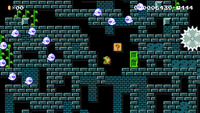
- Many of the Costume Mario costumes are based on characters from other non-Mario franchises.
- If the player places a Spike Trap in a Super Mario World-themed underwater level, the sprite used is based on that of a Sea Urchin from The Legend of Zelda: Link's Awakening, which in turn appears similar to the Gordos of the Kirby series.
Super Mario Odyssey
- Many locations visited in the game are inspired by real world locations, such as Tostarena (based on Mexico), New Donk City (based on New York City, US) and Shiveria (based on Siberia, Russia).
Super Mario Maker 2
- Takamaru and multiple ninjas from The Mysterious Murasame Castle appear as part of the animation for the "Ninja Attack!" sound effect that plays a sped-up version of the game's main theme.[4]
- The course creators Agent 1, Agent 2, Celebrity MC, and Celebrity DJ are respectively based on Callie, Marie, Pearl, and Marina from the Splatoon series.
Mario Kart series
Super Mario Kart
- The jingle used when the player comes in 5th-8th place at the end of a race samples the song "Entrance of the Gladiators" composed by Julius Fučík.
Mario Kart Wii
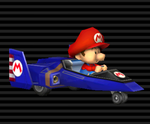
- The Blue Falcon kart is a reference to the vehicle of the same name in the F-Zero series, driven by Captain Falcon.
Mario Kart 8
- Two crossover downloadable content packs have been announced: The Legend of Zelda × Mario Kart 8 (pack one) and Animal Crossing × Mario Kart 8 (pack two).
- Link appears as a playable character in pack one, while the Villager and Isabelle from the Animal Crossing series appear in pack two.
- Hyrule Circuit (based on The Legend of Zelda series), Mute City (from the F-Zero series) and Excitebike Arena (based on Excitebike) appear in pack one, while Animal Crossing (based on the Animal Crossing series), and Big Blue (also from F-Zero) appear in pack two, with each track featuring a cover theme from their respective series.
- The Blue Falcon returns as a vehicle in pack one. Also included in pack one are the Master Cycle, Triforce Tires, and Hylian Kite, all themed after The Legend of Zelda. Pack two includes the Streetle, City Tripper, Leaf Tires, and Paper Glider, all based on Animal Crossing.
- On Mute City and Big Blue, the countdown and results music are those of the F-Zero series rather than those used on other courses. On Big Blue, reaching the final section of the course causes the announcer from F-Zero X to say, "Yeah! The final lap!" In addition, Animal Crossing uses the music played in The Roost for its results theme.
- The Mercedes-Benz GLA, W 25 Silver Arrow, and 300 SL Roadster appear as downloadable vehicles, and the GLA's tires also appear as a set of tires.
- In Toad Harbor, a statue of Princess Peach similar in appearance to the Statue of Liberty can be seen. Toad Harbor also has some similarities to the city of San Francisco, California.
- As of update 3.0, by scanning a compatible amiibo into the game, the player can receive Mii costumes based upon various Nintendo characters, including Kirby, Captain Falcon, Link, and Fox.
- In Ribbon Road, there is a poster that parodies Kung Fu Panda called "Kung Fu Lakitu".
Mario Kart 8 Deluxe
- Urchin Underpass and Inklings from Splatoon appear in the game, as a battle course and playable characters respectively.
Role-playing games
Super Mario RPG: Legend of the Seven Stars
- Link can be found sleeping in the Rose Town inn after beating Bowyer in the Forest Maze. Talking to him plays the series' classic discovery jingle.
- Samus can be found sleeping in the guest bed of Toadstool's Castle after beating Yaridovich, and before going to Land's End. When spoken to, she says she is "resting up for Mother Brain", a recurring villain in the Metroid series.
- A Samus action figure can be found in a toy box in Booster Tower.
- Hinopio's shop in the Barrel Volcano has models of Captain Falcon's and Samurai Goroh's F-Zero machines (Blue Falcon and Fire Stingray, respectively) from F-Zero, and an Arwing from the Star Fox series.
- Several references to the Final Fantasy series, are in this game, due to the game being produced by Squaresoft.
- Culex is an optional boss designed to resemble a Final Fantasy boss. The music heard during the battle is a remix of "Battle 2", the boss battle theme in Final Fantasy IV, and after the battle is won, the famous Victory Fanfare theme is played. His Elemental Crystals are also the same as in Final Fantasy IV. In addition, his English name is the Latin word for "mosquito", referencing the final boss of Final Fantasy IV, Golbez, whose name is taken from a type of fly.
- In the Japanese version of the game, Culex's dialogue is based around the use of 2D sprites in the four Final Fantasy games in existence at the time, in contrast to Super Mario RPG's pre-rendered 3D graphics. In addition, the item he gives the player upon defeating him, the Quartz Charm, is named "Crystal Charm", another reference to the crystals of the series.
- The enemy Bahamutt is named after the powerful dragon Bahamut from the Final Fantasy series.
- The Czar Dragon shares its name with a superboss that does not appear in but exists within the coding for Final Fantasy VI.
- Upon encountering Bowyer, Mario attempts to simply charge toward Bowyer, fist punching, but Mallow holds him back and exclaims, "Who do think you ARE??? Bruce Lee!?"
- The game's end credits sequence features a nighttime portion heavily based on the Disney theme parks' Main Street Electrical Parade, and the music track "Happy Parade, Delightful Parade" is a soundalike of said attraction's theme tune, "Baroque Hoedown."
- While translating this game, Ted Woolsey initially wanted to name Punchinello "James Bomb," a reference to James Bond, but Square America would not allow it.[5] In the final game, however, Punchinello does introduce himself with a line referencing Bond's introductory quote: "The name's Nello...PUNCHINELLO!" He also says "It's clobbering time!", the catchphrase of The Thing from The Fantastic Four, which is also used by Domino.
- The Axem Rangers are based on the Power Rangers.
- LinkMario.png
Link's cameo
Paper Mario series
Paper Mario
- The Koopa Bros. are based on the Teenage Mutant Ninja Turtles.
- When tattling Moustafa after he reveals his true identity, Goombario says, "Da da da Duuum!", the theme for collecting an item in a treasure chest from The Legend of Zelda series. In addition, Moustafa's alter ego Sheek is a reference to Sheik from The Legend of Zelda: Ocarina of Time.
- Like in Super Mario RPG before it, this game's end credits sequence references the Main Street Electrical Parade.
Paper Mario: The Thousand-Year Door
- In the English version of the game, a Toad in Petalburg mentions that his favorite Game Boy Advance game is Fire Emblem when talked to. In the Japanese version, the game he mentions is Super Mario Bros.
- Petalburg shares its English name with a city in the Pokémon series. Two of the key items the player must obtain in this chapter, the Sun Stone and Moon Stone, are also two types of evolutionary stones in Pokémon.
- TEC-XX is likely based on HAL 9000, the artificial intelligence serving as the antagonist of 2001: A Space Odyssey. Furthering this reference, in the Japanese version, TEC's camera has a red lens.
- In TEC-XX's quiz, one of the choices when he asks how to defeat the demon is a "legendary sword", a reference to the Master Sword from the The Legend of Zelda series.
- Peeka's outfit is based on the Playboy Bunny outfit. In the Japanese version, she is wearing bunny ears, though this was edited for the North American and European releases so that she wears cat ears like her sister Lahla.
Super Paper Mario
- When Fracktail searches its internal database to search for Mario's identity, its eyes are turned into the loading icon for the Wii Shop Channel. In addition, after Dimentio causes Fracktail to short-circuit, Fracktail says "I AM ERROR", a reference to the line spoken by the character Error from Zelda II: The Adventure of Link, as well as making a number of other computer error references.
- In Chapter 2-3, Mario must pay Mimi a debt. Rather than coins, Mimi insists that the debt be repaid in Rubees, a reference to Rupees, the currency of the The Legend of Zelda series. Flipside Tokens also resemble Rupees.
- The Training Machine item resembles a Nintendo DS. When it is given to Merluvlee, she claims that it is used to train one's brain, a reference to the Brain Age series. Dorguy the Second's puzzles are also similar to those of the Brain Age series. After solving them, he states that the players' "brain ages must be very young".
- The Underwhere and many of its aspects and inhabitants refer to the Greek underworld mythology (i.e. Underchomp to Cerberus and River Twygz to River Styx).
- The battle with the Underchomp is based on text-based, turn-based RPGs, such as MOTHER and Dragon Warrior.
- The Dining Specializer in Sweet Smiles and Hot Fraun resembles a DS Lite. Additionally, the top screen reads "Intellido IS." IS is an abbreviation of Intelligent Systems.
- In the first fight with Dimentio, he transports the player and himself to Dimension D, a dimension that he says makes him 256 times more powerful. This is a reference to the limitation of the N64, along with various other systems of the time, of having 256 possible values in an octet.[citation needed]
- In Chapter 3-4, Francis' computer room contains shelves with multiple Nintendo consoles. These include an Nintendo 64, a Nintendo GameCube, a Family Computer, a Super Nintendo Entertainment System, a Virtual Boy, and a Wii. The Wii can only be seen in 3D.
Paper Mario: Sticker Star
- The business of Shady Toad and Sling-a-Thing Toad is implied to be illegal and secret, referencing the real-life black markets.
- The Squirt Gun sticker is based on first-person shooter games when used in-battle.
Paper Mario: Color Splash
- The Fan Thing animation movie—in which a giant fan emerges from Earth's horizon in outer space—is a reference to the final scene of the film 2001: A Space Odyssey, including the music played during said scene.
- In Bloo Bay Beach, the Five Fun Guys manager references the real life Watergate scandal. He mentions "Shufflegate: Exposed," referencing Watergate Exposed, a book on the event.
- In Violet Passage, during the Shy Guy attack on the ship, Huey evades a cannonball by tilting backwards, and the scene is played in slow motion while the camera turns around him. This references the famous bullet-dodge scene in The Matrix.
Mario & Luigi series
Mario & Luigi: Superstar Saga / Mario & Luigi: Superstar Saga + Bowser's Minions
- In the original game, two posters at the Yoshi Theater advertise films centered around Kirby and Starfy. The last character, whose games at the time had not been localized, has his name romanized here as "Stafy."
- Starbeans Cafe is a pun on Starbucks.
- Wario, Fox McCloud, Captain Olimar, Samus Aran, an Excitebike Racer and Link were all going to make appearances at the shop, but they were all replaced by a single appearance from Professor E. Gadd. They were all planned to give Mario certain special items, but these are given out by E. Gadd and most were renamed in the final game. The items would have been as follows:
- Fox would have given the Gold Ring, a reference to the Supply Rings of the Star Fox series (renamed the Bonus Ring).
- Olimar would have given the UV Lamp, one of his ship parts in Pikmin (renamed the Cobalt Necktie).
- Samus gives an Energy Tank from the Metroid series (renamed the Power Grip).
- The Excitebike Racer gives the Excite Spring; this is the only item that was not renamed for the released game.
- Link gives Mario and Luigi the Triforce (renamed the Great Force). Coincidentally, for the remake, not only was the Great Force redesigned to resemble the item it replaced, but Mario and Luigi's obtaining it was also accompanied by the Legend of Zelda games' "item get" jingle.
- In Bink's mini-game Barrel, an 8-bit Stalfos sprite from the original The Legend of Zelda will appear on the right for a few seconds once the player gets 30 points.
- The Secret Specs, a version-exclusive item that replaces the Power Grip in the remake, resembles the top half of a Virtual Boy.
Mario & Luigi: Partners in Time
- The Shroobs' method of fueling their ships is to extract Toad Vim, a reference to The War of the Worlds and how the Martians use human blood to fuel their ships.
- Princess Shroob's throne has three legs, which leads to resemble Tripods.
Mario & Luigi: Bowser's Inside Story
- Princess Lipid's way to give the bros. badges is similar to The Honest Woodcutter, one of Aesop's Fables.
Mario & Luigi: Dream Team
Mario Party series
- The NTSC-US names of many minigames in this series are references to United States and international popular culture. For example:
- In Mario Party 2 the minigame names "Dizzy Dancing" and "Magnet Carta" are respectively puns on Dirty Dancing and the Magna Carta.
- In Mario Party 3, the movie title Waterworld becomes "Water Whirled," "Eiffel Tower" becomes "Awful Tower," "Etch 'n' Catch" is derived from the Etch A Sketch, and "Three Door Monty" is a pun on three-card monte.
- In Mario Party 4, Hop on Pop becomes "Hop or Pop," "Blame It on the Rain" by Milli Vanilli becomes "Blame It on the Crane," and the rock band name REO Speedwagon becomes "Mario Speedwagons."
- In Mario Party 5, the song title "Dazed and Confused" becomes "Mazed and Confused," the hippie slogan "flower power" becomes "Flower Shower," the Aerosmith song title "Bright Light Fright" becomes "Night Light Fright," the name of Mary Poppins becomes "Merry Poppings," Sound of Music becomes "Bound of Music," and the Coney Island amusement park lends its name to one of the minigames as well.
- In Mario Party 6, the ancient racing arena Circus Maximus becomes "Circuit Maximus," the foxtrot becomes "Slot Trot," and the song "Stand by Me" becomes "Stamp By Me."
- In Mario Party 7, the sport name "track and field" becomes "Track & Yield," Ghost in the Shell becomes "Ghost in the Hall," the Big Dipper becomes "Big Dripper," and even another video game, Splinter Cell, is parodied as "Spinner Cell."
- Shroomlock from Mario Party Advance takes his name from the first name of Sherlock Holmes, and claims to be from "Toadland Yard," a reference to Scotland Yard.
- Purchasing Cruise Secrets in Mario Party 7 results in the appearance of the text "Shh... It's a secret to everybody!", a quote from The Legend of Zelda.
- In Mario Party 8, Bowser's line "Let's do the crime warp again!" in Bowser's Warped Orbit is a reference to a line in the Rocky Horror Show song "Time Warp," "Let's do the time warp again."
- In the US version of Mario Party: Island Tour, if the player completes Bowser's Tower with a character besides Bowser Jr., Bowser will say, "That wasn't even my final form!", a reference to a quote from Dragon Ball.
- House of Boos from Mario Party: Star Rush is directly based on the Pac-Man arcade game.
Mario Golf series
Mario Golf (N64)
- The names of various The Legend of Zelda and Star Fox characters appear on the scoreboard.
Mario Golf (GBC)
- The last club is called "Link's Club" and uses the Triforce as its logo.
Mario Golf: Toadstool Tour
- If the golf ball is hit and lands on a patch of flowers, several Pikmin will pop out from the ground.
- The Coin Attack mode can spawn coin formations in the shape of the Triforce.
Mario is Missing!
- In the PC version, there is an unused audio file that plays dialogue from the Star Trek: The Original Series episode "The Ultimate Computer". The file is named PAT.WAV, possibly referencing one of the game's programmers Pat McCarthy.
Kinopio Live
The game features songs by Elton John and My heart will go on by Celine Dion.
Super Mario-Kun
- Kirby makes a cameo in one volume.
- Mario makes a passing reference to Doraemon in volume 3, confusing Doraemon with "Dorabon" (or "Drabon" in the French localization), the Japanese name for Rex.
- In the French release of Super Mario-Kun volume 3, after having trouble recalling enemies from Super Mario Land, Mario finally recognizes their origin game, but Luigi asks if he meant Sonic the Hedgehog.[6]
- In volume 4, there is a chapter based on The Legend of Zelda, in which, while on the way to save Princess Peach, Mario and friends are warped to Hyrule. At the end of the chapter, several F-Zero racers make a cameo.
- Link reference SuperMarioKun 4.jpg
The Legend of Zelda reference.
Super Mario Bros. & Friends: When I Grow Up
- Link makes appearances in the Chef/Waitress page, as a patron at Mario's restaurant, and on the Travel Guide page as the travel guide. A Bot, Daira, and Moblin, enemies from the early Legend of Zelda series, appear on other pages.
Wario Land series
Wario Land: Super Mario Land 3
- Several sound effects of this game are borrowed from Metroid II: Return of Samus, such as the pause sound effect and the sound that plays when Wario hits a boss. Both games were developed by the same developers, and run on the same engine.
Wario Land II
- When the player has completed the game a remake of the 1980 Game & Watch game Flagman appears, called Flagman D-D.
- Some of the treasures in this game are references to other games, such as the Pegasus Boot and the Ocarina from The Legend of Zelda series, as well as a Metroid from the Metroid series.
Wario Land 3
In The Big Bridge, there is a collectable called the Pokémon Pikachu.
Donkey Kong Country series
Donkey Kong Country
- In the Game Boy Advance version of Donkey Kong Country, Sabrewulf from Rare's Killer Instinct fighting game series is stuffed and mounted in Cranky's Cabin, but it is still alive as he occasionally blinks.
Donkey Kong Country 2: Diddy's Kong Quest
- Dixie Kong's hat features the Rare logo printed on it. This stayed with her until 2002, after the company was bought out by Microsoft.
- Chief Thunder, a character from Killer Instinct, makes a cameo on a poster found in Cranky's Monkey Museum. Also within the museum is a Killer Instinct arcade cabinet.
- After the player has beaten the game, they can take part in Cranky's Video Game Heroes competition. The competition is simply whichever video game hero can collect the most DK Coins. When the player first sees this competition the heroes already present are Mario, Yoshi and Link. A garbage can can also be seen in the bottom corner of the screen next to Sonic the Hedgehog's shoes and Earthworm Jim's raygun, with a sign saying "No hopers" on the can, a jab at Sega. These were removed in the Game Boy Advance version, which was released after that company's rivalry with Nintendo terminated.
- The music for the first level of Krem Quay, Barrel Bayou, has a part that sounds similar to Phil Collins's "In the Air Tonight". The composer for the game, David Wise, confirmed that the similarity was intentional.[7]
Donkey Kong Country 3: Dixie Kong's Double Trouble!
- When talking to Bazaar and asking about the owner of the castle in the Northern Kremisphere, refusing his offer to tell for two coins has him say that Link also came in "just last week" and asked about the castle as well. Bazaar also mentions that when he left he was muttering about his shell being the wrong shape, a reference to the Secret Seashell sidequest in The Legend of Zelda: Link's Awakening. These references were removed from the Game Boy Advance port.
Donkey Kong Country Returns / Donkey Kong Country Returns 3D
- At the start of the level Tippy Shippy, fossils resembling Parasites from Metroid Prime appear.
- At one point in the level Foggy Fumes a Mr. Game & Watch-style figure can be seen hammering at a pipe in the background.
- Similarly, what appears to be the skull of Crocomire from Super Metroid can be found.
- In Cranky Kong's Shop in the remake, if the player keeps the Portable DK Barrel selected for a while, Cranky makes a reference to The Legend of Zelda, saying, "It's dangerous to go alone. Buy this!"
Donkey Kong Country: Tropical Freeze
- In the level Busted Bayou, in the area where the "K" can be found, the player can find Samus' gunship sitting on some tree branches similar to the plane wreckage.
- In the level Amiss Abyss, if the player passes the first signpost and giant illuminating statue, reaches the end of the trench and heads back towards the statue through the anemone (the player must have more than one hit point to do this), a Metroid can be seen floating in the background.
- When hovering over the Crash Guard in Funky's shop, he says, "Vehicle trouble? It's dangerous to go alone--take one of these!", a reference to The Legend of Zelda.
- Donkey Kong can be seen playing a Nintendo 3DS during his idle animation; in addition to several Mario games, one of the games he can be heard playing during this is Animal Crossing: New Leaf.
Donkey Kong Land
- The name of the nautilus enemy Nemo is a reference to Captain Nemo from the book Twenty Thousand Leagues Under the Sea, with the submarine he pilots being known as the Nautilus.
Shitamachi Ninjō Gekijō
- In the Windows 95 episode, Bill Gates is portrayed by a Bakabon plush.
Hotel Mario
- The names of the hotels owned by the Koopalings and Bowser are puns on actual famous hotel and resort brands:
- Morton's Wood Door Hysteria Hotel - Waldorf Astoria
- Roy's HardBrick Hotel - "Heartbreak Hotel" (an Elvis Presley song about a fictional hotel.)
- Larry's Chillton Hotel - Hilton
- Lemmy's High-ate Regency Hotel - Hyatt Regency
- Ludwig's Thump Castle Hotel - Trump Towers
- Wendy's Blitz Snarlton Hotel - Ritz-Carlton
- Bowser's Seizures Palace Hotel - Ceasers Palace
- Some of Mario's lines reference popular culture such as "We ain't afraid of no Koopas!" (a play on the line "I ain't afraid of no ghost!" from the Ghostbusters theme song) and "Hey, you! Get off-a my cloud!" from the Rolling Stones song, "Get Off of My Cloud."
Yoshi's Island series
Super Mario World 2: Yoshi's Island
- In the German version of the game, Naval Piranha is called "Audrey", referencing the plant from The Little Shop of Horrors.
- The starry background for some levels (such as KEEP MOVING!!!!) is based upon Vincent Van Gogh's The Starry Night.
Yoshi's Island DS
- When Kamek is introducing Hector the Reflector to Yoshi, he says "Mirror, mirror on the wall, I've got a friend who's the ghastliest of them all! Are you frightened yet, little Yoshi?" This references "Mirror, mirror, on the wall, who's the fairest of them all?", a quote from multiple incarnations of Snow White.
Yoshi's Story
- In Jelly Pipe and Torrential Maze, the names "Zelda" and "Pikachu" appear in the newspaper in the background.
Yoshi's Woolly World
- The music played in Yoshi and Cookies has a few tunes from the title screen of Kirby's Epic Yarn, which was also developed by Good-Feel and composed by Tomoya Tomita.
Diddy Kong Racing / Diddy Kong Racing DS
- Banjo and Conker were included in the original playable roster as "sneak previews" for their then-upcoming games Banjo-Kazooie and Twelve Tales: Conker 64 (which would later be reworked into Conker's Bad Fur Day).
- In the original Diddy Kong Racing, Timber's hat has the Rareware logo on it. This was replaced with the Nintendo DS logo in the remake.
- In Diddy Kong Racing DS, Dixie Kong's hat shows a silver Rareware logo on it, but only when an event happens while racing that she is shown through a box.
Super Smash Bros. series
- The Beam Sword bears a strong resemblance to the lightsabers of the Star Wars franchise. Originally the Beam Sword's sound effects were taken from the Star Wars films. The sound effects were removed for the international releases of Super Smash Bros. and Super Smash Bros. Melee, though they have been included in every installment since.
- Samus's green alternate costume that appears in every game in the series is referred to by Masahiro Sakurai on the Japanese Super Smash Bros. website as "mass-produced Samus", a reference to the Gundam franchise.
- Sakurai considers the dual blades that Pit uses in Super Smash Bros. Brawl similar to Darth Maul's double-bladed lightsaber from Star Wars Episode I: The Phantom Menace, as well as the television series The Clone Wars. He also revealed himself to be a fan of the Star Wars series in an issue of Nintendo Power.
Donkey Kong 64
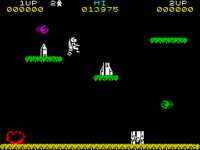
- Two classic games, Jetpac and Donkey Kong, are included as bonus features in this game.
- In the final boss fight of this game, Nintendo and Rareware, the game's publisher and developer respectively, are announced as the sponsors.
- An earlier version of the game featured a shower stall in Donkey Kong's Treehouse with Banjo and Kazooie on the side.
- The first part of the background music for Creepy Castle is an arrangement of "Dauði Baldrs" by Burzum.
- The background music for Creepy Castle's museum contains a sample of "Toccata and Fugue" by Bach.
Luigi's Mansion series
Luigi's Mansion
- The boxart of this game resembles the cover design of Home Alone.
- If Luigi goes to the door to King Boo's alter before capturing the required amount of boos, a scene will show King Boo mistaking Luigi for Mario. In the scene, King Boo states that, "I will not give up my favorite decoration, I like Mario just where he is". This is a reference to the film Star Wars Episode VI: Return of the Jedi, in which Jabba the Hutt states, "I will not give up my favorite decoration, I like Captain [Han] Solo just where he is". Han Solo hangs frozen in carbonite on a wall similar to Mario being trapped in King Boo's painting.
- The Game Boy Horror resembles a Game Boy Color.
- Two (or rather, three) of the Portrait Ghosts are named for real-life historical persons. Henry and Orville are named for Henry Ford and Orville Wright respectively, and Vincent Van Gore is a parody of Vincent van Gogh. In the Spanish translation, however, the twins are given the names of Pedro and Enrique II of Castile, famous stepbrothers in the royalty of Spain; and Van Gore takes the name of another artist, Pablo Picasso.
Luigi's Mansion: Dark Moon
- The scene where Luigi inspects his TV in the game's introduction is a reference to a scene from the movie Poltergeist.
- The scene inside the Hollow Tree in Haunted Towers where Luigi looks down the staircase is a reference to both the movie Vertigo and the famous camera effect introduced in it, dolly zoom.
- The scene in Treacherous Mansion where two Strong Greenies bring a suit of armor to life is a reference to Frankenstein.
WarioWare series
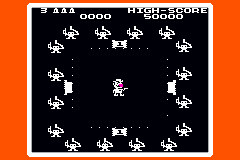
- Many names for microgames in this series are references to famous media and other popular culture.
- In all entries except Game & Wario, 9-Volt and 18-Volt's stages feature classic Nintendo hardware or software; by Smooth Moves, they began to cover more recent games as well as older ones.
- "The Maze That Pays" from WarioWare, Inc.: Mega Microgame$! is a parody of Pac-Man.
- In WarioWare: Twisted!, "Open-And-Shut Case" makes a reference to Little Red Riding Hood, and "Slap Jack" is inspired by Journey to the West in the original Japanese game and Jack and the Beanstalk in localizations.
- In WarioWare: Touched!, Wario's encounter with the Sewer Guru in the opening (in which the guru asks him whether he dropped a pair of Game Boy Advance systems or a Nintendo DS) is a reference to the Aesop's fable The Honest Woodman; and the website's description for Wario-Man makes the analogy that an old garlic clove is to Wario "[w]hat a radioactive spider is to Peter Parker," the alter ego of Spider-Man.
- In Smooth Moves, "Universal Marionette" features a background spoofing Leonardo da Vinci's Vitruvian Man, and the White Rabbit from Alice's Adventures in Wonderland is referenced in the victory animation for the first level of "Clock-Watcher."
- Game & Wario features various characters from the Rhythm Heaven games in its cinematics. The Chorus Kids appear with Sal Out in the opening cinematic; the interviewer and wrestler from Fever appear on the sidewalk in the Pirate minigame's intro and have their own slide in the ending credits; and one of the Rhythm Heaven monkeys is hidden in the crowd during the report of the new console. The Onion from the series' first game appears in the credits and on a pile of books in Ashley's intro cutscene. One Rhythm Heaven character, the Wandering Samurai, even gets his own microgame in Gamer. Also in Gamer, the second level of "Sole Man" takes place in a wrecked city on fire where Wario-Man must avoid a giant dinosaur foot, in reference to Godzilla.
- The Triforce appears as one of the possible drawings in "On the Mark," a WarioWare Gold microgame which had previously appeared in Touched! as "Chalk Full." Further allusions to the Rhythm Heaven series are made: Mona imagines a plushie modeled after Tibby, the protagonist of Rhythm Heaven Megamix, Mr. Sparkles' rank A character card states he "goes to a gym known for its celebrities, like that wrestler who gets interviewed all the time.", 9-Volt's book contains pictures of the Huebirds of Happiness and dialing the code "CAFE" in the telephone room will lead to a call where someone implied to be the Barista mentions that putting an Ashley doll in his café lead to an influx of new customers, referencing how an Ashley doll is seen in one of the Café's background in Rhythm Heaven Megamix.
Wario World
- Several Nintendo consoles appear as treasures, including the Nintendo Entertainment System, Game Boy Advance, Nintendo 64 and Nintendo GameCube.
Donkey Konga series
Donkey Konga
The Donkey Konga series includes both famous songs and music from other Nintendo franchises. The songs are different in each region. All of these songs are listed here.
Donkey Konga 2
More songs from both popular culture and other Nintendo games.
- Toon Link's face appears as a badge
Mario + Rabbids Kingdom Battle
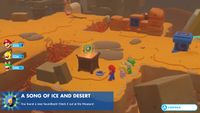
- The title screen theme takes a few tunes from Tribalstack Tropics in Yooka-Laylee, as both games were composed by Grant Kirkhope.
- The soundtrack that plays during the sandy portions of Sherbet Desert is titled "A Song of Ice and Desert", in reference to George R. R. Martin's fantasy novel series, A Song of Ice and Fire.
- In Spooky Trails, the player can find a Rabbid sleeping on a house-like structure. When observed, Beep-0 will say, "He'll catch the Red Baron one of these days." This references Snoopy from Peanuts, particularly his "Flying Ace" persona.
- The name and description of Luigi's Attack From The Future II sentry both reference Back to the Future Part II. The sentry's description, "It's back! It's back from the future and believe me, it looks VERY gloomy for you enemies[...]", references the events of the film, as Marty McFly returns from 2015 to a dystopian alternate 1985.
- The beginning of the one of the battle themes, titled "Cold Start, Hot Finish", borrows a riff from the Freezeezy Peak theme from Banjo-Kazooie. One of the reasons may be because they are both composed by Grant Kirkhope.
References
- ^ Borp's coverage on Mario Boards
- ^ a b c d e f g Klepek, Patrick (December 29, 2015). How A Mario Character Was Named After Motorhead's Lemmy. Kotaku. Retrieved December 29, 2015.
- ^ Super Mario Character Guide, page 88
- ^ Nintendo. (May 15, 2019). Super Mario Maker 2 Direct 5.15.2019. YouTube. Retrieved May 15, 2019.
- ^ Bob Rork Woolsey Interview
- ^ Mario (beaten up): "Oui! Vous étiez dans le jeu Super Mario Land... ("Yes! You were in the game Super Mario Land...")
Luigi: "T'es sûr que ce n'était pas Sonic le Hérison? (You're sure that wasn't Sonic the Hedgehog?)"
Sawada; translated by Florent Gorges. Super Mario: Manga Adventures, volume 3, p. 153. Retrieved April 30, 2016. - ^ [1]
